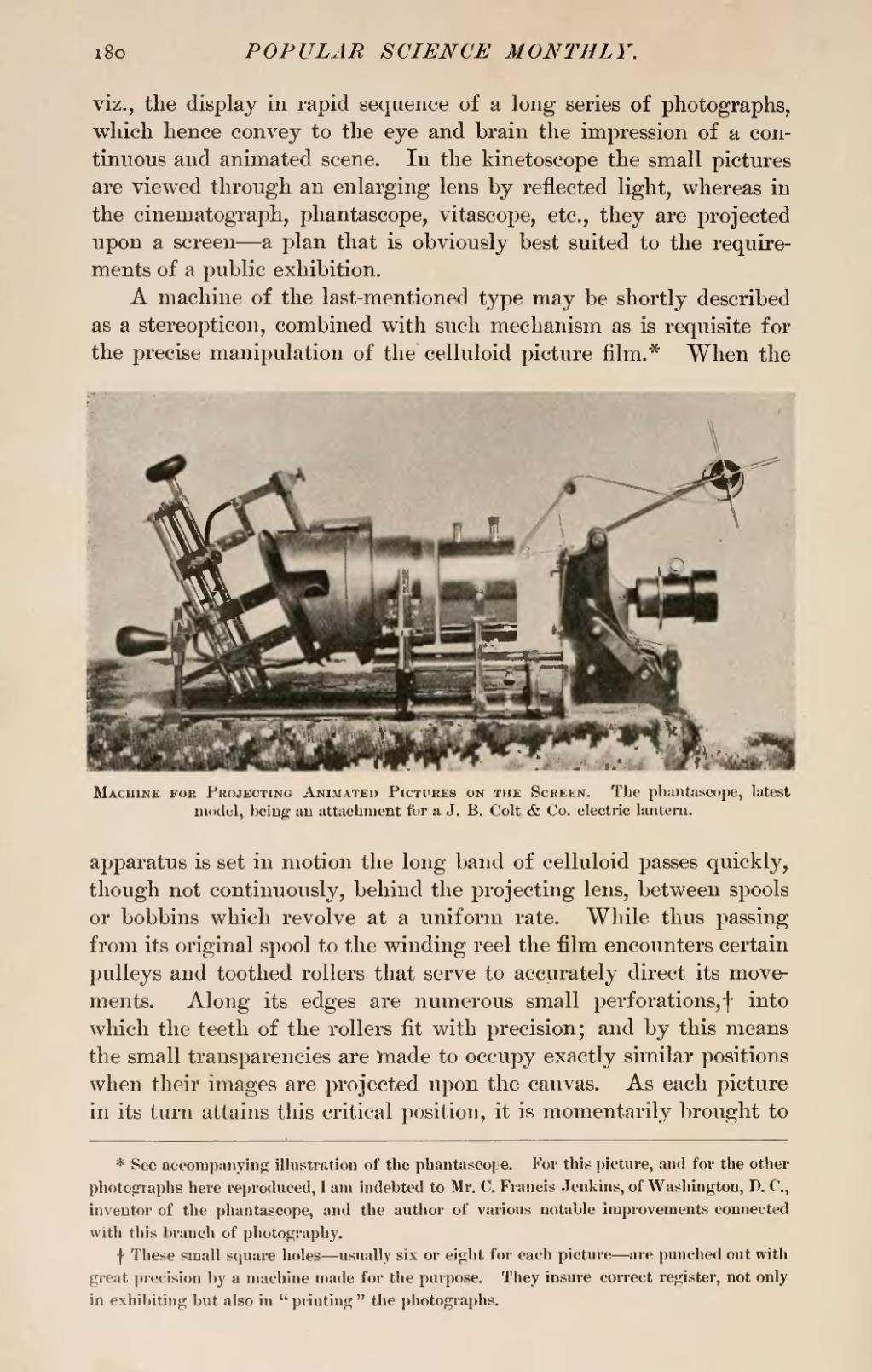viz., the display in rapid sequence of a long series of photographs, which hence convey to the eye and brain the impression of a continuous and animated scene. In the kinetoscope the small pictures are viewed through an enlarging lens by reflected light, whereas in the cinematograph, phantascope, vitascope, etc., they are projected upon a screen—a plan that is obviously best suited to the requirements of a public exhibition.
A machine of the last-mentioned type may be shortly described as a stereopticon, combined with such mechanism as is requisite for the precise manipulation of the celluloid picture film.[1] When the

Machine for Projecting Animated Pictures on the Screen. The phantascope, latest model, being an attachment for a J. B. Colt & Co. electric lantern.
apparatus is set in motion the long band of celluloid passes quickly, though not continuously, behind the projecting lens, between spools or bobbins which revolve at a uniform rate. While thus passing from its original spool to the winding reel the film encounters certain pulleys and toothed rollers that serve to accurately direct its movements. Along its edges are numerous small perforations,[2] into which the teeth of the rollers fit with precision; and by this means the small transparencies are made to occupy exactly similar positions when their images are projected upon the canvas. As each picture in its turn attains this critical position, it is momentarily brought to
- ↑ See accompanying illustration of the phantascope. For this picture, and for the other photographs here reproduced, I am indebted to Mr. C. Francis Jenkins, of Washington, D. C., inventor of the phantascope, and the author of various notable improvements connected with this branch of photography.
- ↑ These small square holes—usually six or eight for each picture—are punched out with great precision by a machine made for the purpose. They insure correct register, not only in exhibiting but also in "printing" the photographs.
